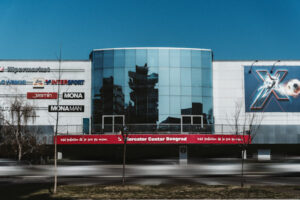BY ALICE BREHENY
The outlet mall sector is one of the few parts of the property market to deliver consistent positive rental growth over the last few years. The key contributor to this growth is increasing demand from retailers – a trend that has not been felt across the wider retail sector – and constrained supply of quality assets. Many retailers re-assessing their expansion targets are looking at outlets more closely. Outlets tend to offer a lower-cost entry point. This has boosted demand, especially from retailers trying to establish a footprint in a new market.
The turnover leases standard at outlet centers provide retailers with the comfort of affordability, especially during difficult economic periods. This leasing model will continue to support tenant demand for the sector and builds a strong relationship between the landlord, operator, and retailer to work collaboratively, aligning their interests.
There has recently been an influx of North American retailers opening outlet stores across Europe and Asia, including Michael Kors, Abercrombie & Fitch, True Religion, Coach, and Fossil. More established outlet mall traders such as Tommy Hilfiger, Nike, Prada, and Hugo Boss have been keen to enlarge their stores, creating big “destination” stores. Other retailers actively seeking to expand their outlet portfolios include Furla, Armani, Desigual, and North Face. While there has been a steady growth in retailers with requirements for the outlet sector, as with all segments of the retail market, demand is focused on prime, quality assets.
The outlet leasing model is characterized by shorter leases than mainstream shopping centers, turnover rents, and varied levels of flexibility for both landlords and tenants. This has traditionally deterred investors, put off by the short leases and potential volatility of income. But the reality is that rents cannot fall below the previous year’s level and all the volatility is on the upside. Turnover leases ensure affordability for retailers at outlets and occupancy cost ratios for tenants are typically much lower than at full-price shopping centers.
At a time when wider economic performance cannot be relied upon to drive retail property performance, the role of asset management is vital and we believe the outlet leasing model is more conducive to growth than its shopping center counterpart. Performance break clauses and shorter leases mean underperforming tenants can be removed quickly, while units can easily be re-sized or retailers re-located. Greater flexibility in leases means that operators and landlords can respond to retailers’ specific local requirements.
The turnover lease aligns the landlord’s interests with the retailers’ to optimize performance; slowing growth in retail sales encourages retailers to re-fit stores and landlords to increase marketing expenditure. Given that the retail market is prone to rapid change, flexibility within the outlet leasing model allows assets to respond quickly to changing conditions, improving their chance of outperformance.
What is your opinion on this topic? Discuss it with us! Send your opinion to opinion@across-magazine.com !






